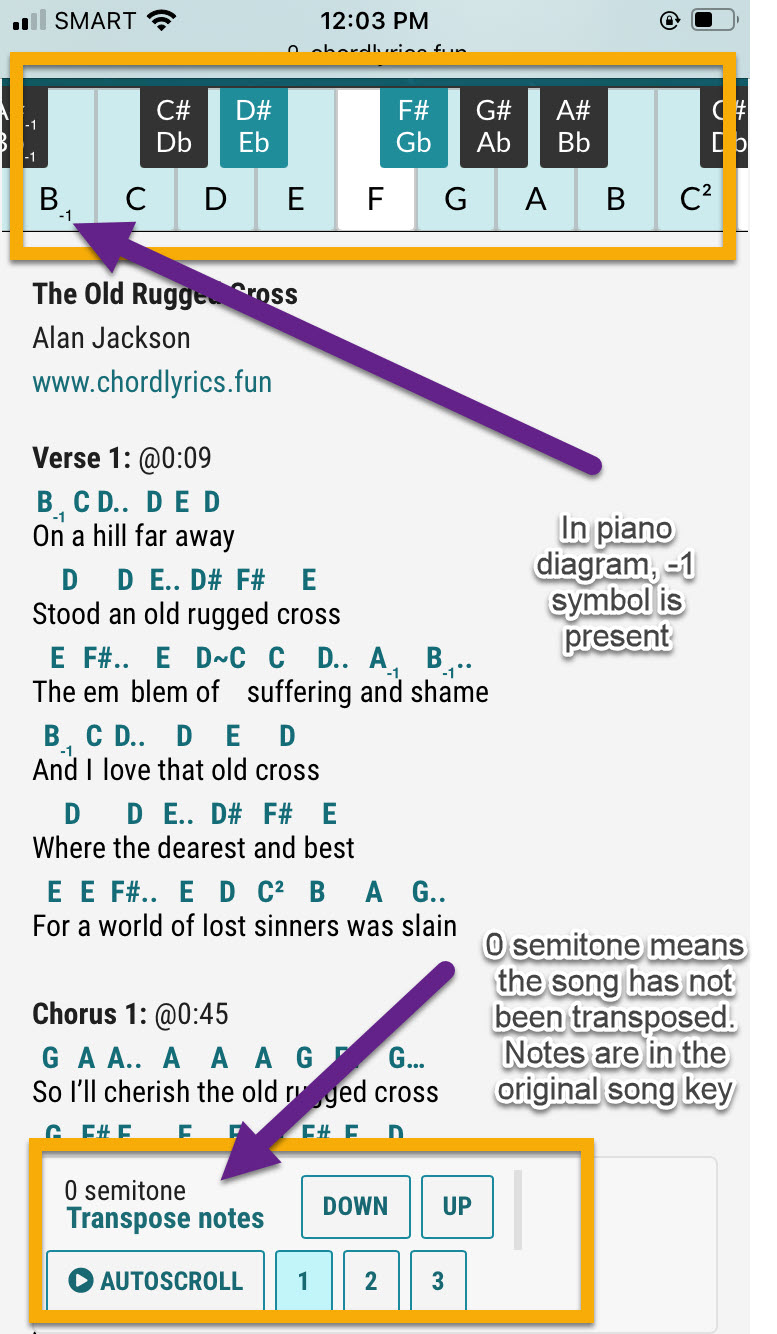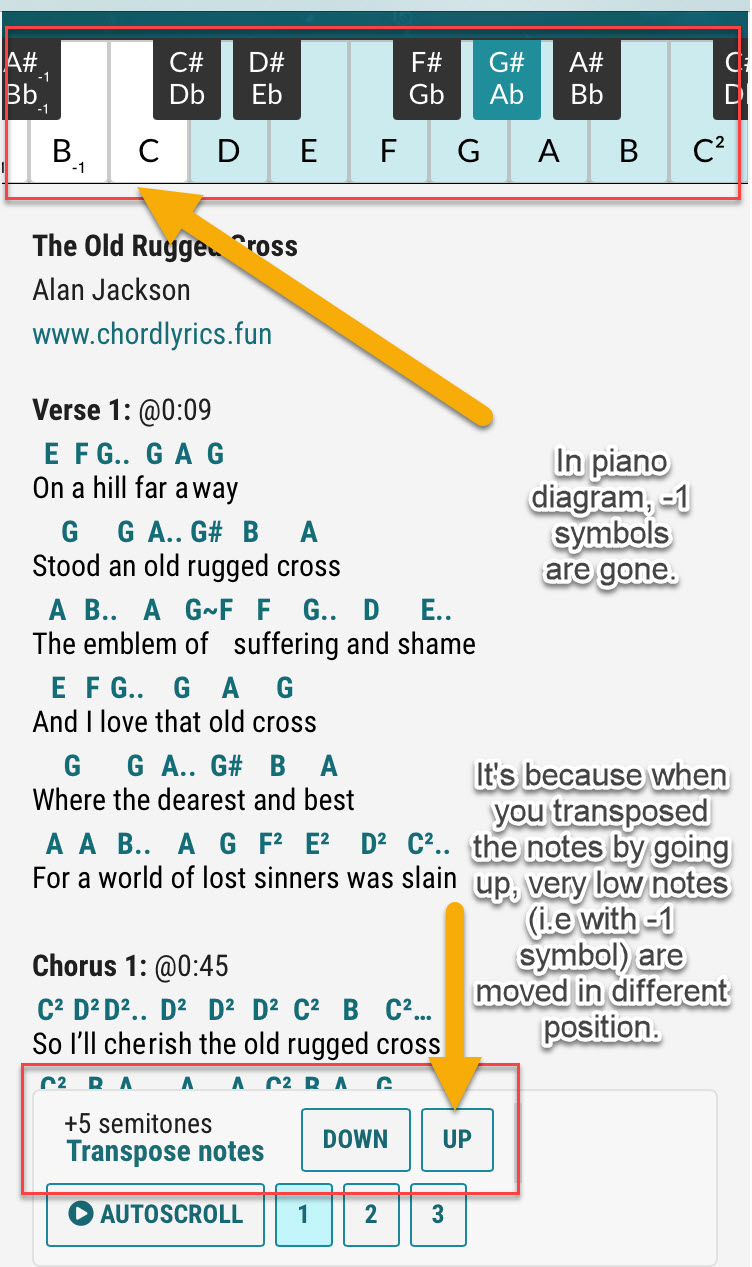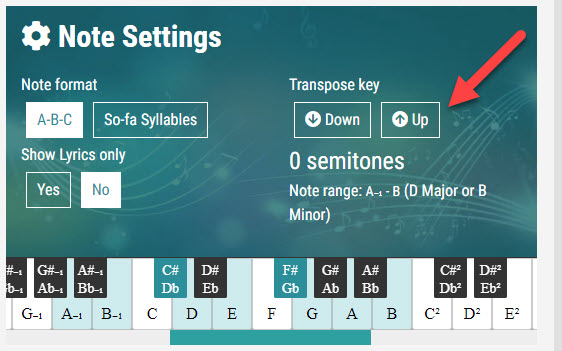Explanation #1 (short version)
Notes with -1 symbol are only for piano, violin, guitar, harp, and other instruments with many playable notes (from the lowest to the highest pitch it can play)
Instruments like recorder and bamboo flute can’t reach that note because they have limitation to play.
If you can’t reach very low notes (i.e with ₋₁ symbol) in your instrument, you can transpose the notes by pressing "Up" button.
BEFORE

AFTER
When you transpose look at the piano diagram, there’s no -1 symbol when I transposed it.
It's because when you transposed the notes by going up, very low notes (i.e with -1 symbol) are moved in different position.

Song example: https://chordlyrics.fun/notes/the-old-rugged-cross-alan-jackson-notes/
In some cases, some songs are much easier to play without converting (transposing). If there's still a note with negative symbol in that case, then just play the lowest note which your musical instrument can handle.
Explanation #2 (long version)
Symbols “₋₁, ₋₂, ², ³” after a certain note are indication if what octave does a certain note belongs. To understand these symbols clearly, let’s first define the words “note” and “octave”.
Music Terminologies
Note – In music, a note is a symbol denoting a musical sound. For example, in a piano instrument, all the black keys and white keys represent a note.
Notice that note names e.g C,D,E,F,G,A,B, flats (b) and sharps (#) are repeated.
Note names are being repeated but they have unique pitch sound depending on the location they're in.
This is why octave is important and takes that role.
Octave – [1] An octave is a type of musical interval, or the measure of the distance between two notes. Specifically, an octave is the distance between one note and another note with the same letter name. For example, let’s find the lower and higher octaves from middle “C” in the diagram.

[2] Count from the note labeled C to the next note labeled C - that's an octave. You might have noticed that the distance spans eight of the keyboard's white keys (including the two Cs themselves). The 'oct-' in octave comes from a Latin prefix meaning 'eight.' That's where the octave gets its name!
Octaves are connected in 12 equal intervals. Each of these 12 intervals brings us to a new note. They are as follows:
1) C
2) C#/Db,
3) D,
4) D#/Eb,
5) E,
6) F,
7) F#/Gb,
8) G,
9) G#/Ab,
10) A,
11) A#/Bb,
12) B
The notes with slashes can be called by either name ( # - sharp / b - flat), depending upon which key we’re in.
Meaning of “₋₁, ₋₂, ², ³”
Now, we understand notes and octave in music. Let's finally discuss the symbols you see in this website. As what I said earlier, symbols “₋₁, ₋₂, ², ³” after a certain note are indication if what octave does a certain note belongs.
₋₂ - two octaves lower than middle C
₋₁ - one octave lower than middle C
² - one octave higher than middle C
³ - two octaves higher than middle C
C2 : C₋₂, D₋₂, E₋₂, F₋₂, G₋₂, A₋₂, B₋₂
C3 : C₋₁, D₋₁, E₋₁, F₋₁, G₋₁, A₋₁, B₋₁
C4 : C, D, E, F, G, A, B
C5 : C², D², E², F², G², A², B²
C6 : C³, D³, E³, F³, G³, A³, B³
Now let's have an example. Let's say you encounter a note "A₋₁". Since the note have a subscript symbol (₋₁), it implies that A is below middle C which means that it's a very low note that some musical instruments like recorder and bamboo flute can't reach it. My suggestion is that try to convert or transpose the notes by semitone by clicking the Transpose key button until you won't see those negative symbols. 😉 👍 
In some cases, some songs are much easier to play without converting (transposing). If there's still a note with negative symbol in that case, then just play the lowest note which your musical instrument can handle.
PS: These symbols are created exclusively for this website. Please do not teach this to schools. It is intended only for those musicians who doesn't know how to read music sheet but have the knowledge on how to play musical instrument through reading letter notation or so-fa syllables.
References:
[1] https://www.masterclass.com/articles/music-101-what-is-an-octave
[2] https://study.com/academy/lesson/octave-definition-function-examples.html


